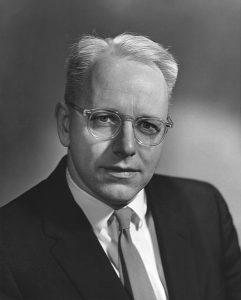Menu
 It was 106 years ago today when William Haenszel was born in Rochester, New York.
It was 106 years ago today when William Haenszel was born in Rochester, New York.William Manning Haenszel (June 19, 1910 – March 13, 1998) was an American epidemiologist who developed the first national system to track cancer cases and their possible causes (Surveillance, Epidemiology, and End Results or SEER). He was an elected fellow of the American Statistical Association, the American Public Health Association, and the American Association For the Advancement of Science. He worked at the National Cancer Institute from 1952 to 1976, when he became a Professor of Epidemiology at the University of Illinois. With Nathan Mantel, he co-authored the Mantel-Haenszel statistical test for omitted variables.[1]
In the 1970's, when the Nixon Administration declared a ''war on cancer,'' William Haenszel, as chief of biometry -- the statistical analysis of biological data -- set out to record individual cases, to track them from diagnosis to death, and to synthesize the data at the N.C.I., in Bethesda, Md., to learn about potential causes. SEER -- which he started in 1973 -- is probably the largest registry for any one disease in the world, said Dr. Earl S. Pollack, who was chief of biometry at the institute after Haenszel. [2]
"Mr. Haenszel provided the intellectual foundation for what epidemiologists do on a day-to-day basis in the study of causes of disease,''
''We can make the right inferences today because of his insights.''
Dr. Jack H. Goldberg
Haenszel was widely known for migrant studies in the 1950's and 1960's. In one project, he showed that the high stomach cancer rates in Japan were no longer found in the Japanese who migrated to Hawaii. He identified the role of diet as a possible cause of stomach cancer. In a 1959 paper, written with Nathan Mantel, also of the cancer institute, Mr. Haenszel described what is now known as the Mantel-Haenszel Method for analysis to assess the relationship between exposure to a hazard and disease rates. [2]
The Cochran-Mantel-Haenszel method is a technique that generates an estimate of an association between an exposure and an outcome after adjusting for or taking into account confounding. The method is used with a dichotomous outcome variable and a dichotomous risk factor. We stratify the data into two or more levels of the confounding factor (as we did in the example above). In essence, we create a series of two-by-two tables showing the association between the risk factor and outcome at two or more levels of the confounding factor, and we then compute a weighted average of the risk ratios or odds ratios across the strata (i.e., across subgroups or levels of the confounder).[3]